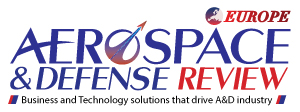With expansive experience on a wide variety of commercial and defense platforms, digital engineering expertise and advanced manufacturing approaches, Spirit AeroSystems is uniquely positioned to support DoD and Defense prime contractors with the development and fielding of future Unmanned Aircraft Systems (UAS).
UAS will be an area of enduring demand for the DOD. The Department is investing in UAS development to enable replacement of legacy platforms and position to counter current and future threats. UAS will operate across a wide range of architectures, involving disparate types of systems, from swarms of small modular mission-configurable systems, to tailored special purpose systems built at lower-rate. Notwithstanding the fact that future UAS systems will be modular and easily upgradable and deployable, they must be affordable.
"The challenge for the DOD and UAS prime contractors is to develop, test, field and sustain the most capable systems in the shortest time possible at the lowest possible cost."
Moreover, the DOD will need to have a capability to produce these systems at higher rates with exceptional quality, potentially on product lines that involve multiple models. The challenge for the DOD and UAS prime contractors is to develop, test, field and sustain the most capable systems in the shortest time possible at the lowest possible cost.
DOD and UAS prime contractors can address the above challenges in UAS development and fielding by adopting three practices/concepts:
• Employing commercial best practices for affordability, producibility and industrialization as well as utilizing existing infrastructure
• Leveraging digital engineering and model-based simulations early to flatten learning curves and speed program development
• Digitally integrate advanced manufacturing and right-sized automation
Adopting commercial best practices
Commercial companies have the ability to create significant cost savings for the DOD through proven cost-reduction practices and cultures based on efficiency. Continuous cost improvement is engrained in the culture, which has generated decades of supply chain best practices, design-to-cost techniques and requirement management strategies.
Employing commercial best practices, like should-cost and clean-sheet price analysis,helps programs achieve cost targets and bend the cost curve to the low end of traditional cost ranges. Expansive commercial and defense supply chain networks drive increased purchasing power, subsequently creating significant supply base cost leverage for prime customers.
Design for Manufacturing (DFM) isthe engineering DNAthat drivesIntegrated Product Teams. It requires an inordinate amount of focus on production research, planning, and execution during the design phase of a program. The costandflow ofproduction systems are validated through digital modeling, ensuring a low-risk transition into full system integration, qualification, and production.Additionally, these commercial production systems typically manage multi-model production lines. At Spirit, we driveimproved quality and reduced assembly flow, tooling and capital requirements for full rate production through the use of our Spirit Exact®solution. Leveraging precision drilled holes to eliminate traditional assembly tool strings,Spirit Exact has reduced production cycle times by 30 percent on our commercial aircraft programs.Spirit Exact can be easily applied to UAS system development and lead to meaningful reductions in tooling, capital equipment and assembly costs. It can also facilitate the establishment of a production system that is adaptable to change, accommodates multi-model lines, improves maintainability through full digital definition, and enables interchangeability.




 Leveraging digital engineering and model-based simulations early to flatten learning curves and speed program development
Leveraging digital engineering and model-based simulations early to flatten learning curves and speed program development However, when a supplier is able to engage early and often in the OEM’s Integrated Digital Environment (IDE), collaboration is much more meaningful and impactful.Full IDE integration among government. OEM and suppliers allow for the defactodigitization of a traditional IPT. Team connectivity via the IDE allows for seamless coordination among team members, dramatically improved cycle times, and a more efficient environment.In addition, all stakeholders gain a real-time view into program
However, when a supplier is able to engage early and often in the OEM’s Integrated Digital Environment (IDE), collaboration is much more meaningful and impactful.Full IDE integration among government. OEM and suppliers allow for the defactodigitization of a traditional IPT. Team connectivity via the IDE allows for seamless coordination among team members, dramatically improved cycle times, and a more efficient environment.In addition, all stakeholders gain a real-time view into program  These concepts and approaches can help the DOD and UAS prime contractors develop, test, field and sustain the most capable systems in the shortest time possible and at the lowest possible cost.
These concepts and approaches can help the DOD and UAS prime contractors develop, test, field and sustain the most capable systems in the shortest time possible and at the lowest possible cost.
![Protecting and Analyzing Data from Unmanned Platforms at the Edge of the Battlefield $box_cxo_headline_new[cxo_ids]](https://www.aerospacedefenserevieweurope.com/newstransfer/upload/450x308_vxrH.jpg)
![Evolving Quality Assurance and Control for Advanced Manufacturing: An Opportunity for the U.S. Leadership $box_cxo_headline_new[cxo_ids]](https://www.aerospacedefenserevieweurope.com/newstransfer/upload/450x308_t7z0.jpg)
![The Fast Moving Space Industry is Embracing New Methods $box_cxo_headline_new[cxo_ids]](https://www.aerospacedefenserevieweurope.com/newstransfer/upload/450x308_2hdz.jpg)
![Digital Engineering at Rheinmetall Air Defense $box_cxo_headline_new[cxo_ids]](https://www.aerospacedefenserevieweurope.com/newstransfer/upload/450x308_fFZ4.jpg)
![Time to Bring the Benefits of Coalitions to Bear $box_cxo_headline_new[cxo_ids]](https://www.aerospacedefenserevieweurope.com/newstransfer/upload/450x308_emp4.jpg)
![Redefining Future Operations through Technology Enabled Services $box_cxo_headline_new[cxo_ids]](https://www.aerospacedefenserevieweurope.com/newstransfer/upload/450x308_4zcK.jpg)
![The Resurgence of The Manpads Threat and Importance of Advanced Laser DIRCM $box_cxo_headline_new[cxo_ids]](https://www.aerospacedefenserevieweurope.com/newstransfer/upload/450x308_z91T.jpg)
![Smart Manufacturing and Industry 4.0 $box_cxo_headline_new[cxo_ids]](https://www.aerospacedefenserevieweurope.com/newstransfer/upload/450x308_i8o6.jpg)
![Navigating Aircraft Maintenance Quality Challenges: Insights from a Quality Manager $box_cxo_headline_new[cxo_ids]](https://www.aerospacedefenserevieweurope.com/newstransfer/upload/156-450x308_wVm3.jpg)
![Moog's Ascendance in the eVTOL/AAM Market: Insights, Achievements, and Future Endeavors $box_cxo_headline_new[cxo_ids]](https://www.aerospacedefenserevieweurope.com/newstransfer/upload/450x308_XHxS.jpg)
![Jetsetting Journeys: A Career Soaring from JFK to Unifi's Unique Aviation Landscape $box_cxo_headline_new[cxo_ids]](https://www.aerospacedefenserevieweurope.com/newstransfer/upload/450x308_f76K.jpg)

